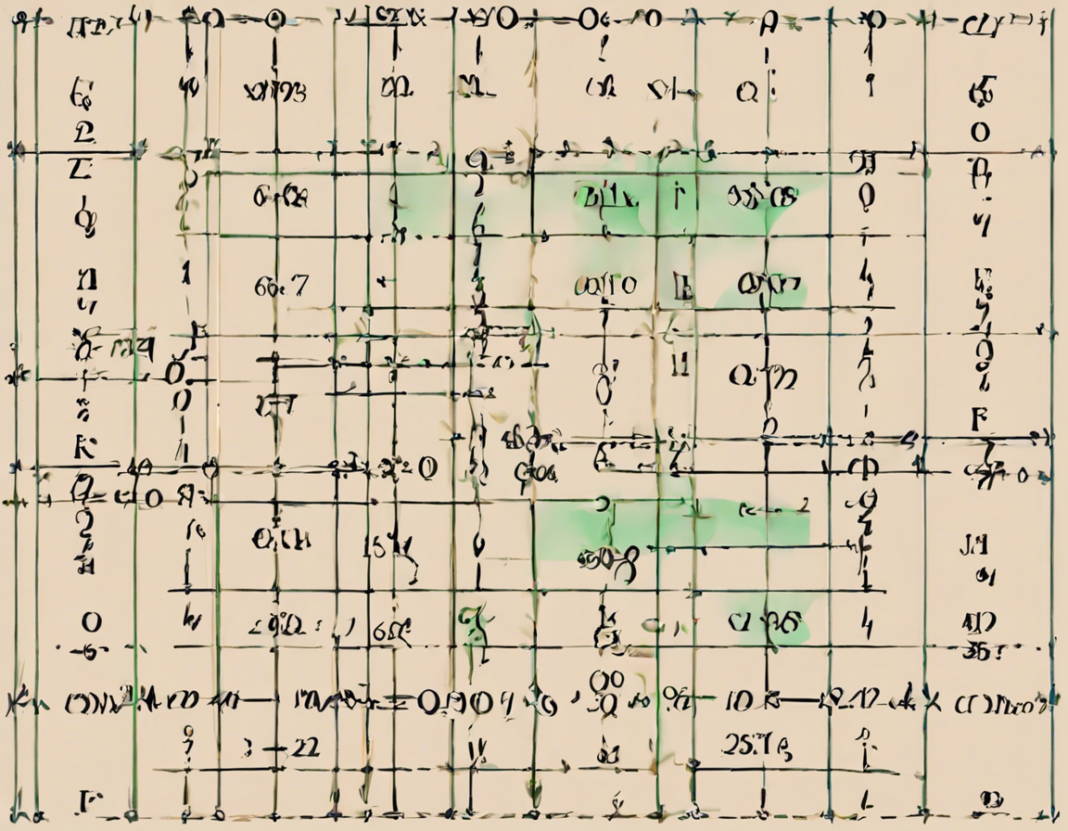Matrices play a crucial role in mathematics and various fields such as physics, computer science, and engineering. One important concept related to matrices is the co-factor. Understanding the co-factor of a matrix is essential in various matrix operations, including finding the inverse of a matrix, solving systems of linear equations, and calculating determinants. In this comprehensive guide, we will delve into the concept of co-factors, how to calculate them, their significance, and their applications.
What is a Matrix?
Before we dive into co-factors, let’s have a quick refresher on what a matrix is. In mathematics, a matrix is a set of numbers arranged in rows and columns within brackets. For example, a 2×2 matrix is represented as follows:
[A = \begin{bmatrix} a & b \ c & d \end{bmatrix}]
Here, a, b, c, and d are elements of the matrix. Matrices can be of various sizes, such as 2×2, 3×3, or even larger.
Determinant of a Matrix
One crucial aspect of matrices is the determinant. The determinant of a square matrix is a scalar value that can be calculated from its elements. The determinant of a 2×2 matrix is computed as ad – bc. For larger matrices, the calculation can be more intricate, involving expansion by minors or row reduction.
Co-Factor of a Matrix
The co-factor of an element in a matrix is a signed minor associated with that element. Given a square matrix A, the co-factor of an element at the ith row and jth column, denoted as C_{ij}, is calculated as follows:
[C_{ij} = (-1)^{i+j} \times M_{ij}]
Here, (-1)^{i+j} is a sign factor that depends on the position of the element in the matrix, and M_{ij} is the minor associated with the element.
Calculating Co-Factors
To calculate the co-factor of each element in a matrix, you can follow these steps:
1. For each element in the matrix, determine its minor by removing the row and column in which the element resides.
2. Calculate the determinant of the remaining matrix (minor).
3. Apply the sign pattern (-1)^{i+j} to the determinant to obtain the co-factor of the element.
Let’s illustrate this with an example. Consider the matrix:
[A = \begin{bmatrix} 1 & 2 & 3 \ 4 & 5 & 6 \ 7 & 8 & 9 \end{bmatrix}]
For element a_{11} = 1:
– The minor is the 2×2 matrix: [\begin{bmatrix} 5 & 6 \ 8 & 9 \end{bmatrix}]
– The determinant of the minor is (59) – (68) = 45 – 48 = -3
– Applying the sign pattern for a_{11} gives: (-1)^{1+1} * (-3) = -3
You need to repeat these steps for each element in the matrix to calculate all the co-factors.
Significance of Co-Factors
Co-factors are valuable in various matrix operations and concepts:
– Calculating the Adjoint: The adjoint of a matrix is formed by taking the transpose of the matrix of co-factors. It is used in finding the inverse of a matrix.
– Finding the Inverse: The inverse of a matrix can be determined using the formula: A^(-1) = (1/det(A)) * adj(A), where adj(A) refers to the adjoint of matrix A.
– Cramer’s Rule: In systems of linear equations, Cramer’s Rule uses determinants and co-factors to solve for each variable’s value efficiently.
Co-factors are integral components in these operations, allowing for the manipulation and analysis of matrices in various mathematical contexts.
Applications of Co-Factors
The concept of co-factors finds applications in diverse fields, including:
– Physics: Co-factors are used in physics to solve problems related to forces, motions, and equilibrium systems.
– Engineering: In engineering disciplines, co-factors play a role in structural analysis, circuit theory, and control systems.
– Computer Science: Matrices and co-factors are fundamental in computer graphics, algorithms, and data analysis.
– Economics: Co-factors are applied in economic models and optimization problems.
– Statistics: In statistical analysis and machine learning, matrices and co-factors are utilized for data manipulation and algorithm development.
The versatility and significance of co-factors make them indispensable tools in various scientific and technical fields.
Frequently Asked Questions (FAQs) about Co-Factors
-
What is the relationship between co-factors and determinants?
The co-factor of an element contributes to the calculation of the determinant of a matrix. The determinant is calculated by summing the products of elements and their corresponding co-factors. -
Can co-factors be negative?
Yes, co-factors can be negative, as they depend on the position of the element in the matrix. The (-1)^{i+j} term introduces the necessary sign changes. -
How are co-factors used in finding the inverse of a matrix?
Co-factors are essential in finding the adjoint of a matrix, which, in turn, is utilized in calculating the inverse of the matrix using the formula A^(-1) = (1/det(A)) * adj(A). -
Are co-factors only applicable to square matrices?
Yes, co-factors are specifically defined for square matrices since determinants and inverses are derived from square matrices. -
Can co-factors be used to solve systems of linear equations?
Yes, co-factors are employed in methods like Cramer’s Rule for solving systems of linear equations by utilizing determinants and co-factors.
Understanding co-factors and their role in matrix operations is fundamental for any student or practitioner working with matrices in mathematics, science, or engineering. By grasping the concept of co-factors and their applications, you can enhance your problem-solving abilities and analytical skills in various disciplines.
